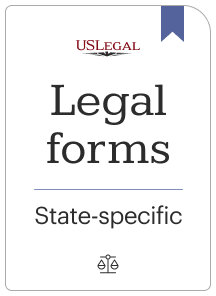

This form is a sample letter in Word format covering the subject matter of the title of the form. Full and final settlement letter is an important document prepared by an employer to settle all financial and legal matters with an outgoing employee. This letter outlines the employee's final dues, including salary, bonuses, and reimbursements, and signifies the closure of the employment relationship. It may also include important information regarding the return of company assets, confidentiality agreements, and non-compete clauses. The format of a full and final settlement letter may vary depending on the specific circumstances, such as the reason for separation or the company's policies. However, there are a few common types of full and final settlement letter formats for employees: 1. Resignation: This type of settlement letter is issued when an employee voluntarily resigns from their position. It includes details about the final payment, the date of release from services, and procedures for returning company property. 2. Termination: When an employee's services are terminated by the employer, a full and final settlement letter specifies the reasons for termination and outlines the employee's entitlements, including unpaid salary, notice period pay, and any severance package. 3. Retirement: A full and final settlement letter for a retiring employee includes information about retirement benefits, such as gratuity, provident fund, and pension payments. It also outlines the process for clearing outstanding dues and returning company assets. 4. Layoff or Redundancy: In cases of workforce downsizing or redundancy, a settlement letter will include details about the compensation package, notice period pay, and any additional benefits offered to affected employees. The format of a full and final settlement letter typically includes the following key elements: — Date: The date on which the letter is issued. — Employee Information: Full name, designation, employee ID, and department. — Employer Information: Company name, address, and contact details. — Payment Details: Breakdown of the final settlement, including salary, bonuses, incentives, allowances, and any outstanding dues. — Deductions: Mention of any pending loan repayments, insurance premiums, or other applicable deductions. — Notice Period: The notice period served by the employee or the amount in lieu of the notice period. — Separation Benefits: Information regarding severance pay, retirement benefits, gratuity, provident fund, or any other entitlements. — Assets Return: Instructions on returning company property like laptops, access cards, uniforms, or any other items. — Non-Disclosure and Non-Compete: Any confidentiality or non-compete agreements that the employee must abide by post-employment. — Signatures: Space for the employee's and employer's signatures, indicating agreement and acceptance. It is essential for both employees and employers to carefully review and understand the terms mentioned in the full and final settlement letter. Seeking legal advice, when necessary, can ensure that the process is fair and in compliance with labor laws and company policies.
Final settlement for PF refers to the process through which an employee can withdraw the accumulated provident fund (PF) balance when they leave an organization permanently. It involves the withdrawal of both the employee's contribution and the employer's contribution, along with any interest accrued. Keywords: Final settlement, PF, provident fund, withdrawal, accumulated balance, employee's contribution, employer's contribution, interest accrued. There are two types of final settlement for PF: 1. Full and Final Settlement: This type of settlement occurs when an employee discontinues their employment and wishes to withdraw the entire accumulated PF balance. The process includes the withdrawal of the employee's contribution, the employer's contribution, and the interest earned over the period of employment. To initiate this settlement, the employee needs to fill out the necessary forms and submit them to the respective PF office. 2. Partial Settlement: In certain situations, an employee may only wish to withdraw a portion of their PF balance instead of the entire amount. This type of settlement is known as partial settlement. It allows employees to withdraw a specific sum from their accumulated PF balance for purposes such as purchasing a house, repaying a loan, or meeting medical emergencies. The employee must provide valid reasons and supporting documents to justify the partial withdrawal. The remaining balance continues to earn interest while the partial withdrawal is made. Final settlement for PF is generally processed through the Employees' Provident Fund Organization (EPFL) in accordance with the rules and regulations of the government. The EPFL ensures that the withdrawal process is efficient and transparent, providing employees with their entitled PF balance in a timely manner. To initiate the final settlement process, employees must typically fill out forms such as Form 19 (for full and final settlement) or Form 31 (for partial settlement) and submit them with relevant supporting documents to their employer or the EPFL office. It is essential to provide accurate and up-to-date information to avoid delays or complications in the settlement process. Overall, the final settlement for PF allows employees to access their hard-earned savings for a secure financial future.
All documents you find through US Legal Forms are reusable. To re-download and fill out previously saved forms, open the My Forms tab in your profile. Benefit from the most extensive and easy-to-use legal paperwork service!